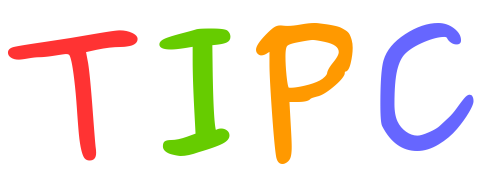

Tumor-Immune Partitioning and Clustering
|
 |
|
 |
|
 |
|
 |
|
 |
|
 |
|
 |
|
Growing evidence supports the importance of quantifying tumor-immune cell interactions in the tumor microenvironment to enable precision cancer therapy. However, most existing methods rely upon immune cell counts or nearest neighbor-type analyses and fail to fully capture spatial cellular organization and heterogeneity. Hence, we propose a computational algorithm, termed Tumor-Immune Partitioning and Clustering (TIPC), that jointly measures immune cell partitioning between tumor epithelial and stromal areas and immune cell clustering versus dispersion. We applied TIPC to two large colorectal cancer (CRC) cohorts. TIPC identified tumor subtypes with unique interaction signatures between tumor cells and T cells that harbor prognostic significance and are associated with distinct tumor molecular features. We also applied TIPC to additional immune cell types identified using morphology and supervised machine learning. Lastly, we validated our results using The Cancer Genome Atlas colorectal adenocarcinoma data. Detailed results can be found in https://journals.plos.org/ploscompbiol/article?id=10.1371/journal.pcbi.1012707. TIPC provides a novel approach for measuring immune cell spatial configuration in the tumor immune microenvironment in a manner that is compatible with any tissue image data source that provides single-cell-level positional information. TIPC is specifically designed to measure immune cell partitioning and clustering, two features that are prognostically significant and biologically relevant, yet cannot be inferred from immune cell density alone. We therefore anticipate that application of TIPC to clinically available H&E, conventional immunohistochemistry, or multiplex immunofluorescence (mIF) digital images will enable comprehensive characterization of the tumor-immune interactions that govern the anti-tumor immune response, ultimately leading to improvements in patient care driven by an improved understanding of tumor immunobiology and more refined patient stratification, at no additional cost. Existing spatial analysis methods include direct nearest neighbor cell distance (NND) measurements as well as more sophisticated metrics such as the Morisita-Horn (M-H) index, an ecological measure adapted to quantify co-localization of immune and tumor cells based on subregion tessellation (Maley et al., Breast Cancer Res, 2015), and the G-cross (Barua et al., Lung Cancer, 2018) and L-cross SPP functions (Carstens et al., Nat Commun, 2017). These SPP functions estimate a cumulative nearest neighbor distance function or a neighborhood count function that reflect proximity between cell types. While these spatial measures have been used to identify tumor subtypes with prognostic associations, these methods have significant drawbacks including confounding by immune cell density, which often harbors independent prognostic significance, and variable tumor morphology, particularly with respect to degree of differentiation, which also has prognostic significance for many tumors. Table 1 shows that TIPC subtypes harbored additional prognostic significance to the existing methods. |
|
|

|
|
Table 1. Comparison of prognostic significance between tumor subtypes derived by TIPC and other existing methods, using CD3+ T-cell mIF data of 931 CRC samples. Multivariable Cox proportional hazards model included both the tumor subtypes identified by TIPC and (a) CD3+ T-cell density quartiles, (b) Morisita-Horntumor:CD3+ T-cell index quartiles, (c) G-crosstumor:CD3+ T-cell (in stroma) AUC quartiles (r < 20 µm), and (d) L-crosstumor:CD3+T-cell (in stroma) AUC quartiles (r < 20 µm). HR, hazard ratio; CI, confidence interval. |